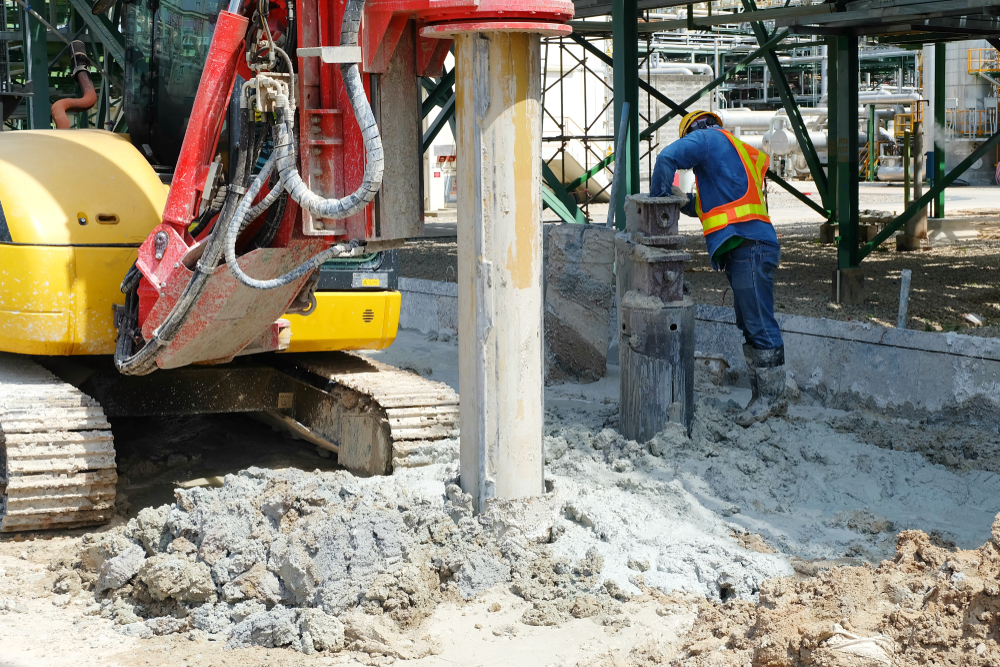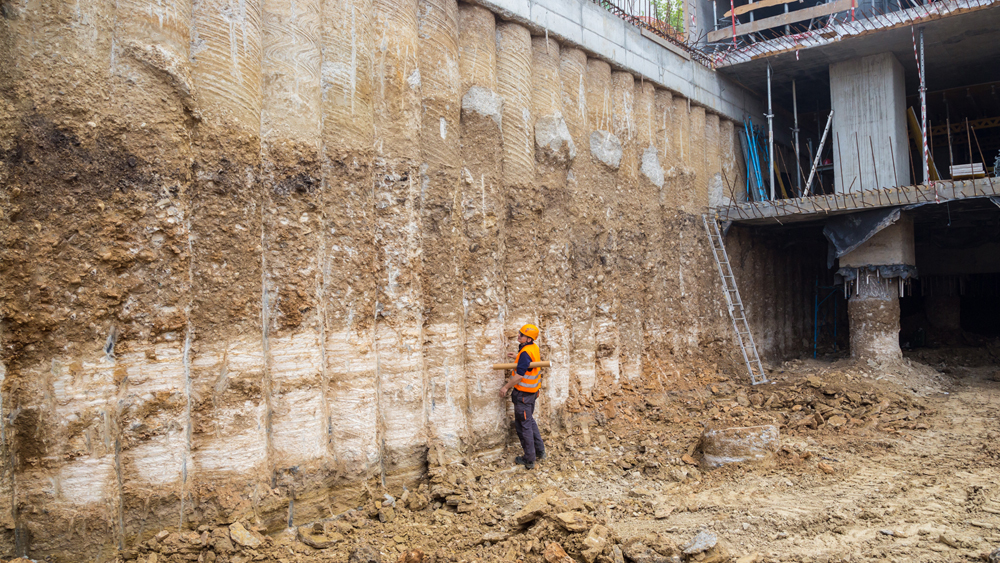Navigating the Complexities of Geotechnical Eng Projects
Navigating the Complexities of Geotechnical Eng Projects
Blog Article
Recognizing the Comprehensive Function of Geotechnical Engineers in Ground Examination and Soil Evaluation for Building Projects
Geotechnical designers are essential to the success of building and construction projects, providing necessary insights via extensive ground examinations and soil evaluation. Their know-how in evaluating dirt habits and using sophisticated screening techniques educates crucial choices that copyright architectural integrity and safety and security. By collaborating and determining possible risks with multidisciplinary groups, these specialists significantly affect task outcomes, consisting of performance and cost-effectiveness. The details of their role often expand beyond these features, prompting a deeper expedition into the methods they utilize and the effects of their findings on general project viability.
Duty of Geotechnical Engineers
The crucial role of geotechnical engineers in building and construction tasks can not be overstated, as they give important insights into dirt habits and website problems. These experts are entrusted with assessing the viability of the ground for numerous kinds of frameworks, ensuring security and security throughout the building process. Their experience encompasses a broad array of tasks, including website characterization, dirt sampling, and research laboratory screening, which are vital for identifying the mechanical and physical residential properties of the dirt.
Geotechnical designers use their findings to create fundamental styles that fit load-bearing needs and minimize risks connected to soil settlement, slope, and liquefaction stability. They play a vital function in identifying potential dangers, such as groundwater changes and contamination, which can dramatically influence job viability. They team up with designers, civil designers, and contractors to ensure that geotechnical considerations are integrated into the overall layout and construction stages.
Ground Investigation Strategies
Ground investigation strategies develop the foundation of geotechnical engineering, making it possible for designers to acquire an extensive understanding of subsurface problems. These methods are important for evaluating soil properties, establishing groundwater degrees, and recognizing prospective geological threats.
Common approaches consist of borehole boring, which permits the removal of soil examples at different midsts, providing crucial data for evaluation. In addition, sitting screening strategies, such as Common Infiltration Tests (SPT) and Cone Infiltration Tests (CPT), are used to review dirt strength and density directly in the ground.
Geophysical techniques also play a significant function in ground examinations. Strategies such as seismic studies and electrical resistivity tomography help assess subsurface characteristics without substantial excavation. geotechnical industry. These non-invasive methods are particularly beneficial in sensitive or large areas where disruption need to be decreased
Furthermore, exploratory trenches can be excavated to aesthetically examine dirt layers and determine any abnormalities. Each of these techniques adds distinct understandings, allowing geotechnical designers to develop exact site analyses and inform style decisions. In recap, a mix of these ground investigation strategies is important for effective building jobs, making sure security and architectural integrity.
Dirt Evaluation Methods
Dirt evaluation methods are important for understanding the chemical and physical residential properties of dirt, which directly affect the layout and construction of foundations and other frameworks. Various methods are used to assess soil attributes, making certain that geotechnical engineers obtain precise information for notified decision-making.
One commonly used technique is grain dimension evaluation, which establishes the distribution of particle sizes within a soil example. This is crucial for classifying soil types and anticipating their habits under lots. An additional essential technique is Atterberg limits testing, which assesses the plasticity and wetness web content of fine-grained dirts, providing insights into their engineering residential or commercial properties.

Area examinations, such as Conventional Infiltration Tests (SPT) and Cone Infiltration Tests (CPT), deal important in-situ information concerning dirt strength and stratification. Jointly, these dirt analysis techniques create the structure of geotechnical investigation, enabling designers to develop efficient and secure structures tailored to the details conditions of the website.
Risk Mitigation Strategies
Implementing efficient threat mitigation techniques is crucial for geotechnical engineers to deal with possible obstacles in building and construction projects. These techniques are essential in identifying, evaluating, and handling threats connected with soil conditions, site stability, and groundwater changes, which can detrimentally affect project results.
One primary method includes performing thorough site investigations that utilize sophisticated geophysical methods and detailed dirt tasting. By getting exact information on subsurface problems, designers can make enlightened choices on layout and building and construction approaches. In addition, using anticipating modeling tools enables for the simulation of different situations, allowing engineers to foresee potential problems and implement safety nets.
Furthermore, developing clear interaction channels among task stakeholders fosters a joint strategy to run the risk of investigate this site monitoring. Routine updates and consultations guarantee that all parties know the advancing site problems and can adapt their strategies appropriately.

Influence on Construction Jobs
The efficiency of danger mitigation strategies directly affects the general success of building tasks. Geotechnical designers play a critical role in this domain, as their expertise in ground examination and dirt evaluation educates crucial decisions throughout the building process. By accurately evaluating soil problems and recognizing possible threats, these specialists make it possible for task groups to create efficient services that decrease risks connected with ground instability, water infiltration, and various other geotechnical difficulties.
The effect of extensive geotechnical analysis appears in various facets of building and construction tasks, consisting of cost management, task timelines, and architectural integrity. Early recognition of concerns enables for timely treatments, lessening costly hold-ups and spending plan overruns. Additionally, a thorough understanding of website conditions boosts the layout and engineering process, making sure that structures are constructed to stand up to environmental stress and potential all-natural catastrophes.
Ultimately, the payments of geotechnical engineers are important to the successful execution of building and construction jobs. Their job not only promotes safety and compliance with laws however additionally enhances the long-lasting sustainability of frameworks, making sure that they execute effectively throughout their designated life-span. The collaboration in between other stakeholders and geotechnical groups is important for accomplishing optimum outcomes in building ventures.
Verdict
Finally, geotechnical engineers execute an important feature in construction projects with detailed ground examinations and soil analyses. Their know-how in assessing soil actions, employing various investigation methods, and carrying out threat reduction approaches significantly contributes to the structural stability and security of developed atmospheres. By teaming up with multidisciplinary groups, these specialists enhance project efficiency and ensure compliance with safety standards, ultimately leading to effective building and construction end results and lowered possible threats.
Geotechnical designers are indispensable to visit this site the success of building and construction tasks, supplying vital insights via comprehensive ground examinations and dirt analysis.The pivotal duty of geotechnical designers in building jobs can not be overstated, as they offer vital insights right into dirt habits and site problems. Their know-how includes a broad range of tasks, including website characterization, dirt sampling, and research laboratory screening, which are critical for figuring out the physical and mechanical buildings of the soil.
By accurately analyzing soil problems and determining potential threats, these experts enable task teams to design efficient remedies that minimize risks connected with click to read ground instability, water infiltration, and various other geotechnical challenges.
In verdict, geotechnical engineers do an essential feature in building tasks through thorough ground investigations and dirt evaluations.
Report this page